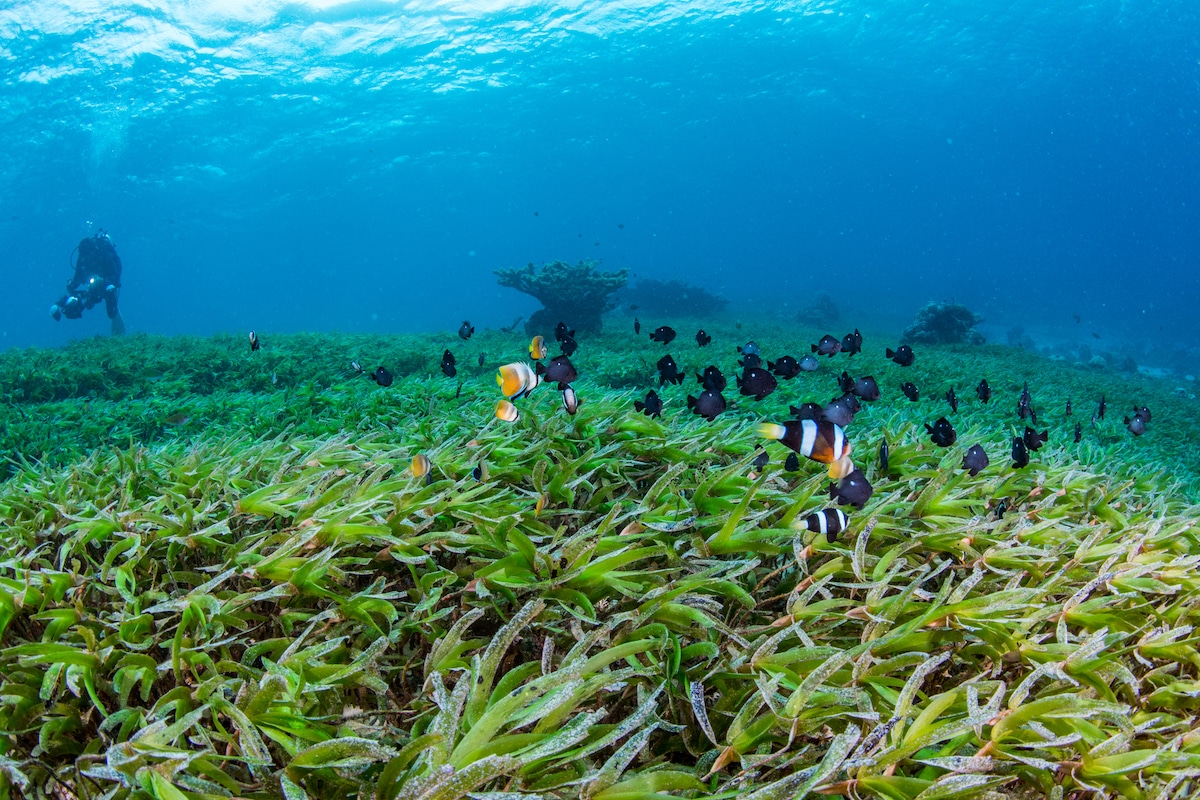Artificial Reefs Improve Productivity of Seagrass Meadows and Could Help Protect Against Climate Change, Study Finds

 Why you can trust us
Why you can trust us
Founded in 2005 as an Ohio-based environmental newspaper, EcoWatch is a digital platform dedicated to publishing quality, science-based content on environmental issues, causes, and solutions.
Seagrass meadows are found all over the planet, from the Arctic circle to the tropics, and are vitally important as habitats for fish and for absorbing atmospheric carbon dioxide.
Seagrasses are becoming increasingly threatened by nutrient pollution and overfishing. Every half an hour a football field-sized area of seagrass is lost, reported the UK’s Natural History Museum.
However, a new Caribbean-based study has found that artificial reefs could help seagrass meadows’ plight by heightening their growth and productivity.
“By attracting fish, whose faeces provide concentrated nutrients for the seagrass, the artificial reefs increase the primary production of the entire ecosystem,” said Dr. Jacob Allgeier, an associate professor of ecology and evolutionary biology at the University of Michigan and co-author of the paper, as the Natural History Museum reported. “We are now investigating how this cascades up the food web. The new energy has to go somewhere, so we are quantifying how it affects invertebrates and fish with our evidence suggesting that it is fueling increases in both.”
The study, “Seagrass production around artificial reefs is resistant to human stressors,” was published in Proceedings of the Royal Society B.
According to a 2020 study, there are approximately 60 species of seagrass. Seagrasses are found in the coastal regions of more than 80 percent of countries, reported the Natural History Museum.
The total area of seagrasses on Earth covers around 115,831 miles, which is about 0.1 percent of the floor of the ocean and approximately the size of the Great Barrier Reef. Seagrass meadows are home to thousands of species of fish and even more invertebrates, providing them with shelter and food.
Seagrasses have the ability to extract nutrients from water and sediment, allowing them to survive in environments that lack an abundance of nutrients. They are also great carbon sinks.
Unfortunately, seagrass meadows have been shrinking for nearly a century. A United Nations report estimates that they are disappearing at a rate of approximately seven percent annually. This causes not only loss of habitat, but the release of vital carbon stores.
The new study showed that the productivity of both undisturbed and disturbed seagrass meadows was improved by the installation of an artificial reef, even in areas with high nutrient pollution.
“Artificial reefs built in seagrass create a positive feedback loop. They attract fish that use the reefs for shelter which, in turn, supply new nutrients from their faeces that fertilise the seagrass around the reef,” said Mona Andskog, a Ph.D. student in the Department of Ecology and Evolutionary Biology at the University of Michigan, who led the research, according to the Natural History Museum. “This increased primary production can increase invertebrate production by providing more food and shelter for invertebrates, which in turn provide more food for fishes.”
Some of the most frequently fished sites in the study were in Haiti, where artificial reefs were shown to provide added benefits to the fish. Large numbers of smaller fish were found, since using nets was difficult around the reef. This meant that the total fish biomass was more than in other areas measured during the study that had not been fished at all.
Artificial reefs could be beneficial for tropical seagrasses, but are likely to have less of an impact on temperate seagrass meadows, since those tend to be more nutrient-rich.
The research team hopes to look into the impact of artificial reefs on seagrass ecosystems, and bring their investigation to the Dominican Republic.
“We will be testing how different configurations of artificial reef clusters can affect the production and fish community composition,” Allgeier said, as the Natural History Museum reported. “This includes the number of artificial reefs in each cluster, as well as their arrangement. As with this research, we hope to simultaneously use the reefs to test fundamental questions about production in these highly impacted ecosystems as well as optimising the positive feedback that is initiated by the artificial reefs.”
Subscribe to get exclusive updates in our daily newsletter!
By signing up, you agree to the Terms of Use and Privacy Policy & to receive electronic communications from EcoWatch Media Group, which may include marketing promotions, advertisements and sponsored content.

 233k
233k  41k
41k  Subscribe
Subscribe 




